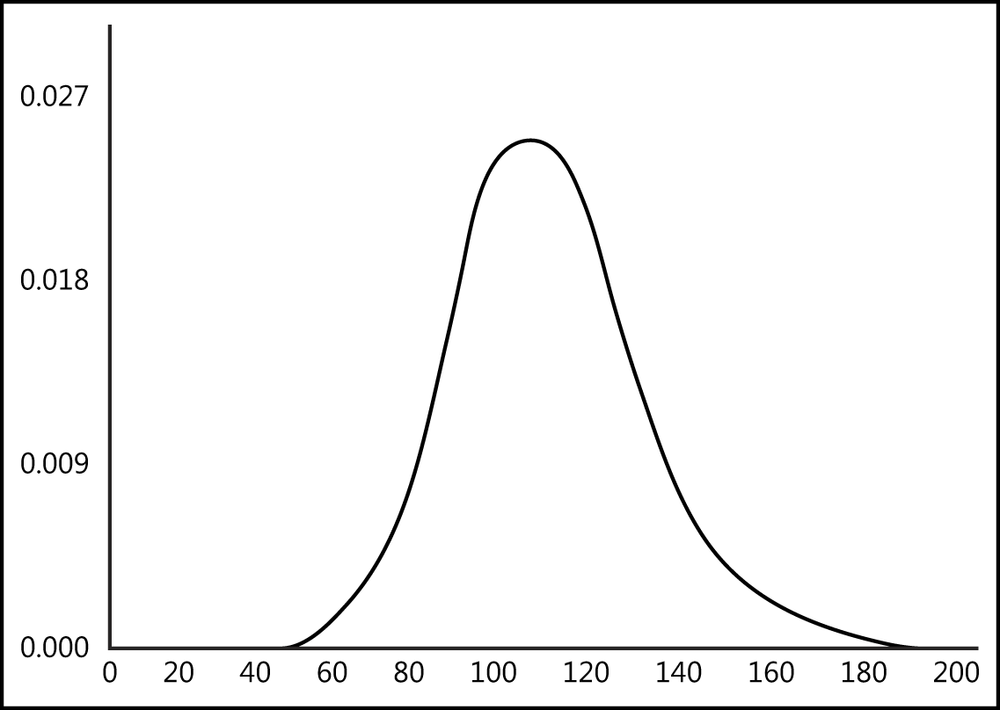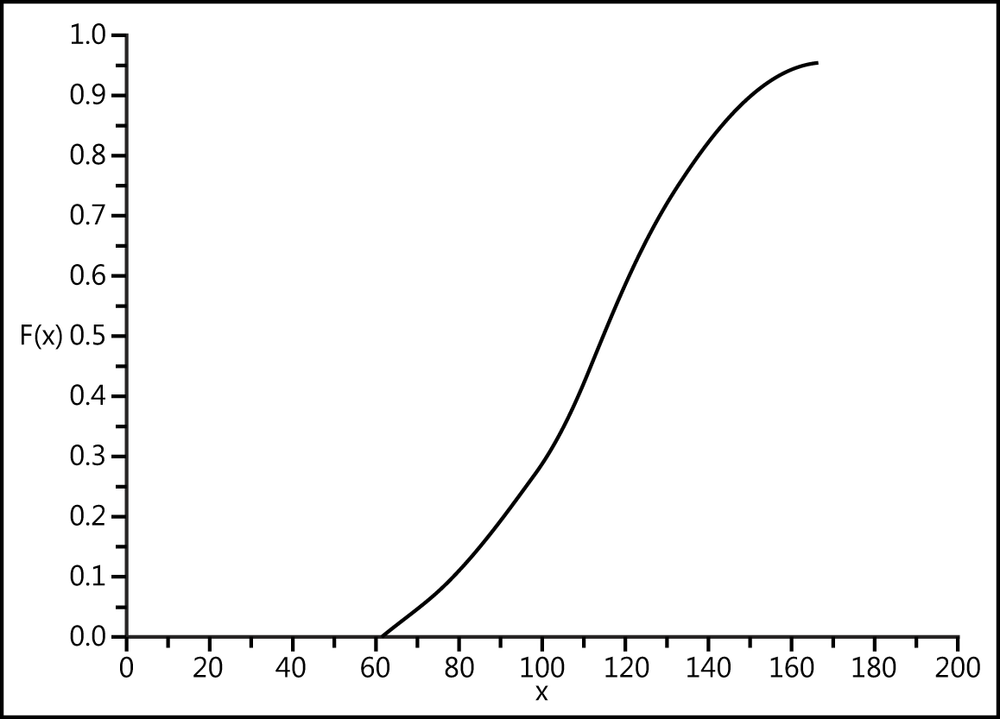Syntax. GAMMA.DIST(x,alpha,beta,cumulative)
Definition. This function returns the probabilities of a gamma-distributed random variable. Use this function to examine variables that have a skewed distribution. The gamma distribution is commonly used in queuing analyses.
Arguments
x (required). The value (quantile) for which you want to calculate the probability (1-alpha).
alpha (required). A parameter of the distribution.
beta (required). A parameter of the distribution. If beta = 1, GAMMA.DIST() returns the standard gamma distribution.
cumulative (required). The logical value that represents the type of the function. If cumulative is TRUE, GAMMA.DIST() returns the value of the distribution function that is the probability that the number of random events is between 0 and x. If cumulative is FALSE, the GAMMA.DIST() function returns the value of the density function.
Note
If x, alpha, or beta isn’t a numeric expression, the GAMMA.DIST() function returns the #VALUE! error.
If x is less than 0, the function returns the #NUM! error.
If alpha or beta is less than or equal to 0, the GAMMA.DIST() function returns the #NUM! error.
The density function for the standard gamma distribution is:
If alpha = 1, GAMMA.DIST() returns the exponential distribution with the following:
For a positive integer n, when alpha = n/2, beta = 2, and cumulative = TRUE, GAMMA.DIST() returns the same result as (1 – CHIDIST(x)) with n degrees of freedom.
If alpha is a positive integer, the gamma distribution is also called the Erlang distribution.
Background. The gamma distribution is a continuous probability distribution of positive real numbers (see Figure 12-62). The gamma distribution is defined by the probability density with x greater than 0.
For other values, the gamma density function is continued with f(x)=0. The parameters are p and q (alpha and beta). To ensure standardization p,q has to be greater than 0. The prefactor bp/Γ(p) ensures that the standardization is correct. The expression Γ(p) is the gamma function.
The following shows the expected value and variance of the gamma distribution:
The gamma distribution is reproductive.
Note
The reproductivity of a probability distribution indicates that the sum of independent random variables is distributed based on the distribution type.
The normal distribution, the Poisson distribution, the gamma distribution, and the Cauchy distribution are examples of a reproductive distribution.
The sum of the stochastically independent random variables x and y, gamma-distributed with the parameters b and px or py, is gamma-distributed with the parameters b and px + py.
The gamma distribution creates a family for several theoretical distribution functions:
The chi-square distribution with k degrees of freedom is a gamma distribution using the parameters p = k/2 and b = ½.
The exponential distribution with the parameter λ is a gamma distribution using the parameters p = 1 and b = λ. According to this, the Erlang distribution with the parameter λ and n degrees of freedom corresponds to a gamma distribution with the parameters p = n and b = λ.
The quotient X/(X + Y) from the stochastically independent random variables x and y gamma-distributed with the parameters b and px or py is beta-distributed with the parameters px and py.
Alternatively, the parameters are as follows:
The density and moments are changed accordingly (for example, the expected value would be αβ). Because this parameterization is commonly used in the English-speaking world, it can often be found in technical literature. To avoid misunderstandings, it is recommended that you explicitly specify the moments—for example, the expected value ab and variance ab2—for a gamma distribution (see Figure 12-63).
The GAMMA.DIST() function is a mathematical distribution function with two parameters (alpha and beta) based on the gamma function. GAMMA.DIST() is the inverse function of GAMMA.INV.
Example. Use the following values to calculate GAMMA.DIST():
10 = value (quantile) for which you want to calculate the probability
2.70 = alpha parameter of the distribution
2 = beta parameter of the distribution
Figure 12-64 shows the calculation of GAMMA.DIST().
With the parameters shown in Figure 12-42, the GAMMA.DIST() function returns the following results:
0.90679 = probability of the gamma distribution based on the data provided and cumulative = TRUE
0.03364 = probability of the gamma distribution based on the data provided and cumulative = FALSE






